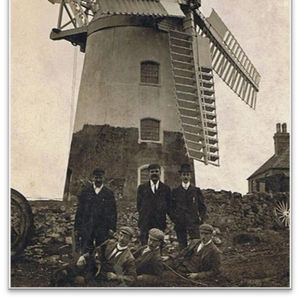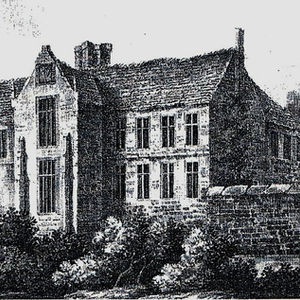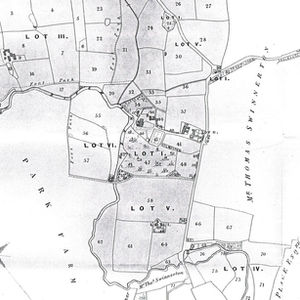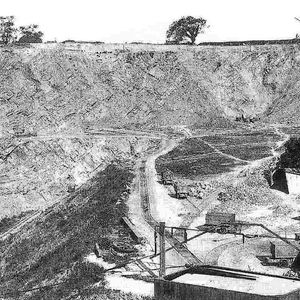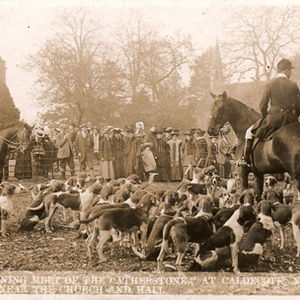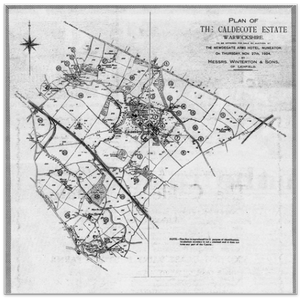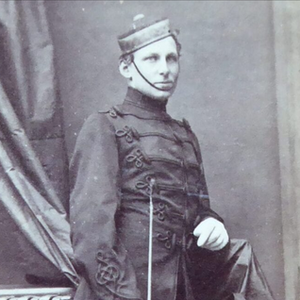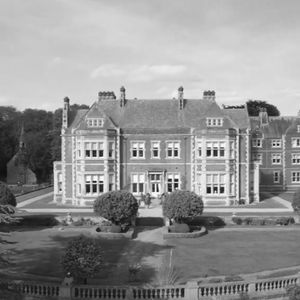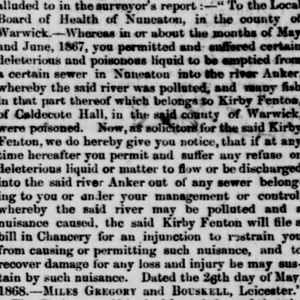
Caldecote's History
Caldecote is an ancient settlement within Warwickshire with a rich historic past, notably remembered for the Siege of Caldecote Hall during the English Civil War (linking it with the death of King Charles I) and its connection with Joseph Hansom, inventor of the Hansom Cab.
There is much more to know about the history of Caldecote and little of it has previously been researched until recently where it is clear how significant Caldecote has been to progression and development across the region and particularly to the town of Nuneaton.
The Story of Caldecote
Free eBook
A collation of historical records spanning 400 years, revealing the importance of this North Warwickshire parish and its community
From the author, Anne Thomas Hughes
‘THE STORY OF CALDECOTE’ IS AN ENJOYABLE, JOURNEY THROUGH TIME THAT HIGHLIGHTS THE SIGNIFICANCE OF COMMUNITY, REVEALS TRUTHS AND REFLECTS BACK ON HOW ALL OF OUR FOREBEARS LIVED, THROUGH THIS LOCALISED PERSPECTIVE.
THOUSANDS OF UNRECORDED EVENTS HAVE IMPACTED THE INDIVIDUALS OF THIS PARISH, WHICH IS WHY THE RECORDS AND PUBLICATIONS THAT REMAIN ARE SO VALUABLE TO MARK THE IMPORTANCE OF THEIR LIVES, WHAT MATTERED DURING THEIR TIME AND THE SIGNIFICANCE OF THE PLACES THEY LIVED. WE ARE SO FORTUNATE TO LIVE AT A TIME WHERE WE CAN ACCESS THIS INFORMATION DIGITALLY AND I AM GLAD TO BE ABLE TO PRESENT THIS THROUGH A CENTRAL, ORGANISED, SOURCE.
First published 2024, a Century after the death of Captain Townshend, the last Caldecote squire.
Within, is a collation of historical facts, information and published news from the 1700s to modern times, relevant to Caldecote and the parts of Hartshill connected to Caldecote Parish and its church of St Theobold’s and St Chad’s. Both Hartshill and Caldecote manors were held by the Caldecote estate, with many parishioners owning or occupying property in both. Boundaries have latterly changed.
This collection will be heartwarming to those who live across North Warwickshire and who are familiar with Caldecote, Hartshill, Nuneaton and the surrounding areas. I also know it will be enjoyed by anyone who has a love of history and appreciates that the occurrences here, echo past experiences of people who lived in small towns, villages and manors across the whole Country.
Historical facts & maps surrounding Caldecote
Caldecote Hall Squires & Occupants
Historical images and further reading
Some of the images and information provided about Caldecote History are credited to the following sources.
100 Years ago, the last squire of Caldecote died at a time when the reformed death duties would devastate the beneficiaries and, like many great estates, it could not be passed on to the next generation. This meant that it had to be fragmented, broken up into Lots to be sold off, which would in theory see most of the parishioners, many of whom had lived their entire lives out in Caldecote, lose their positions and their homes.
The parish has since been saved from full devastation or becoming yet another generic mass of houses or industrial units, due to the community spirit at its heart that persisted because the good squire, Captain Harry Townshend, had the interests of the people at his heart, ensuring, upon his death, that the tenant farmers were offered a fair price to purchase the Townshend Estate farms they occupied, meaning the continued employment and residence of many important parishioners. He and his predecessors did much for the wider community and the town of Nuneaton too, with continued investment in education, new public schemes, the supply of water to the townspeople and championing good farming practices for the betterment of all. The squires also fought for decades to improve sewerage management of the town, resulting in the new works on Townshend lands.
Soon after Captain Townshend’s death, the parish was occupied by those who had continued to farm it, those who found alternative employment so to remain in their homeland and the newcomers with occupations outside of Caldecote. Over time, more ‘outsiders’ were brought into the fold of a community that cherished the environment they lived in and respected its history. This community kept unnecessary development from its door because of those amongst them who were connected to its past and its heart. The Church building has been preserved through their endeavours and the school transformed into a Village Hall where residents still gather together today for meetings and fundraising events. Parts of the parish is now held in a Designated Conservation Area, which should be managed by those who care about it and the rest should be watched diligently to ensure only critical developments are allowed in.
The Hall itself was momentarily occupied by institutions that cast some dark shadows on the parish but was ultimately saved and protected through its conversion into flats, occupied by those who are equally community spirited.
Progression is no stranger to Caldecote though. The maps shown within this collection bare the physical scars of the canal, railway, quarries and sewerage works – all of which, though, saw its occupants duly prosper. The key to Conservation is positive-intended, dialogue between those that seek to introduce improvements and those that assume guardianship.
Empathy is what connects us to each other, to nature and all living creatures. With it, we are able to solve the most difficult challenges for the World and with it also we are able to connect to the past and learn from it. When you read the contained facts associated with listed properties and people or those held within news articles, take a moment to engage with their meaning and the human emotion behind them. A baptism record is the joyous birth of beloved child, a marriage record holds within it all the hopes and dreams of the connected couple and a burial record carries the deepest of griefs. Newspaper reports provide the opportunity to feel the human endeavour, celebration, trauma or frivolity held within each story.
Take these emotions, as valid as your own, with you the next time you are walking around Caldecote and recall those people. Imagine what they saw whilst they walked through the lanes. How the Mill sat perfectly pretty alongside its still and calming pond, set in green, and how the gently turning sails of the windmill provided comfort from its hill-top position, overlooking the busy grandeur of the Hall but also watching over those hardworking men and horses ploughing the fields. Hear the perpetual tapping and clattering echoing from the quarry; the metal clangs of the Blacksmith’s hammer; the Carpenter’s saw; the clip-clopping and heavy wheels squeaking over the bumpy lanes; the lowing, twittering and bleating conversation all around… all only to be interrupted by the rhythmic chuntering and whistling of a passing train. Take in the smells of cooking pots and smoke-pluming, chimney pots of those peacefully situated, village, cottages, but look through a window and you’ll see the energetic toils of women and their children bursting with all of life’s potential. Then each Sunday, when all industry has halted, hear the calling bells, watch the parish’s orderly congregation and, ultimately, take heed of the chatter afterwards because it is that which holds this all together.
Caldecote reflects every small town and parish in the Country, revealing a way of life that should not only be remembered but become an inspiration to how we might come together again, where community is sanctuary – a place to belong and effect positive changes for the cumulative benefit of the entire World.
